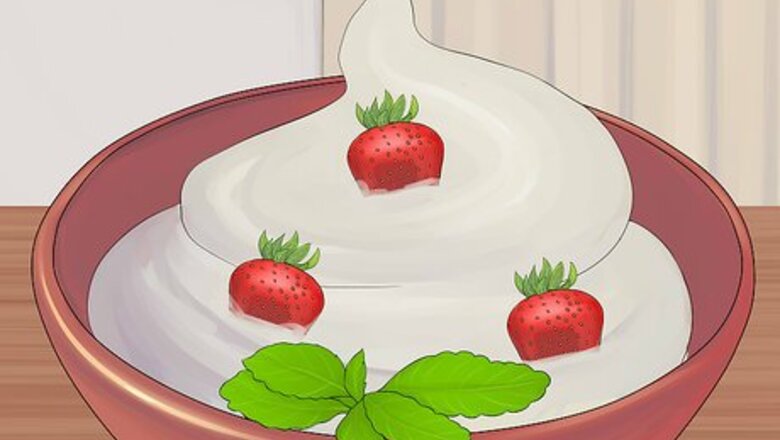
views
X
Research source
Made with as little as four ingredients - milk, cream, sugar, and something for flavor, like vanilla beans - it’s not only easy to make yourself, it lines the freezer shelves of the frozen desserts section of every grocery store. While delicious, ice cream does contain a lot of saturated fat and sugar, both things that need to be consumed in moderation. For some, the better option is to stop eating ice cream altogether.
Considering Alternatives
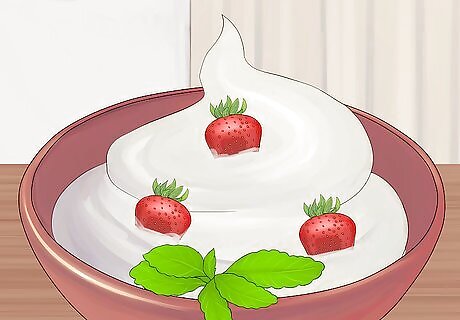
Try frozen yogurt. If you crave a cold, creamy, and sweet food, frozen yogurt can be a healthier option. While labeling laws require products sold as "ice cream" in America to be at least 10% milk fat from cream, frozen yogurt is not made from cream and does not have a fat content requirement. It is made from cultured milk. Not all frozen yogurt is created equally, and some varieties can contain as much fat or sugar as ice cream. Be sure to compare labels to ensure that the brand you buy is a healthier choice.
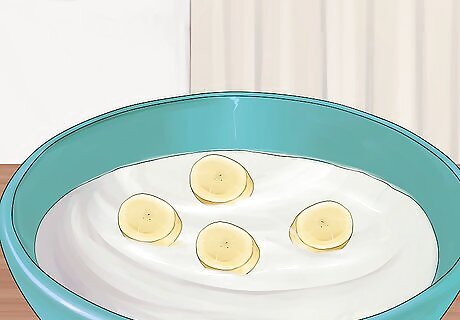
Consider banana swirl. A simple but surprisingly delicious treat, banana swirl is made by peeling and freezing ripe bananas, and then blending them in a food processor or blender until they reach a similar consistency to soft-serve ice cream. Compared to a cup of ice cream, which can contain 300 or more calories, a cup of banana swirl only contains about a hundred calories. In addition, a cup of banana swirl is packed with nutrients like potassium and fiber. Try adding a pinch of cinnamon or a small squeeze of chocolate syrup to make your banana swirl an even more delectable treat. You can also use any other fruits you like for a more traditional fruit smoothie, but nothing beats banana for texture and sweetness that mimics ice cream without added sugar.
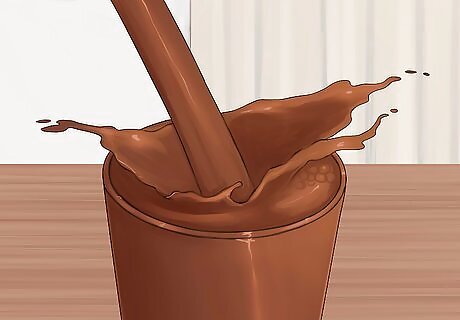
Try a glass of chocolate milk. If you find yourself craving ice cream consistently, it could be that your body is telling you that you need more dairy or that you have a deficiency in the nutrients in dairy. An 8 ounce glass of chocolate milk has about 158 calories and 2.5 grams of fat, but also provides you with much-needed potassium, protein, calcium, and Vitamin D. A glass of chocolate milk is sweet and filling, and may make you forget your craving for ice cream altogether.

Eat smaller portions. When you do eat ice cream, measure out your portion sizes. One serving of ice cream is typically half a cup or one scoop. This serving is acceptable to eat as an occasional treat. You should never eat an entire pint of ice cream in one sitting. For example, half a cup of vanilla ice cream typically has around 145 calories. This is all right to eat once in a while as a dessert, and it will not necessarily ruin a healthy diet. But if you eat an entire pint (which is two cups), you are eating around 580 calories in one sitting.
Using Psychological Tactics
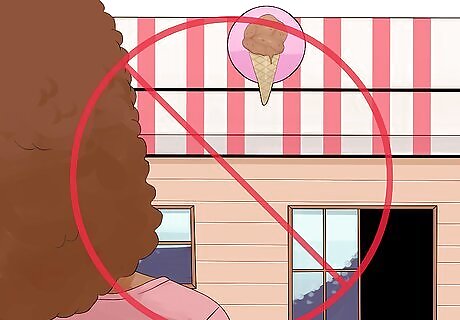
Avoid anything ice cream related. If you find that the mere sight of ice cream leaves you with an insatiable craving, employ the "out of sight, out of mind” technique.This includes avoiding the ice cream aisle at the grocery store, the Dairy Queen drive thru, the “ice cream” part of cake and ice cream, etc. Don’t keep any ice cream in your freezer - for anyone. If someone else in your household wants ice cream, they can go get it - and eat it - when they’re out of the house. If your daily commute normally passes by an ice cream shop and you frequently struggle with the temptation to stop there, consider changing your commute. Plan to take a route that is ice cream free.
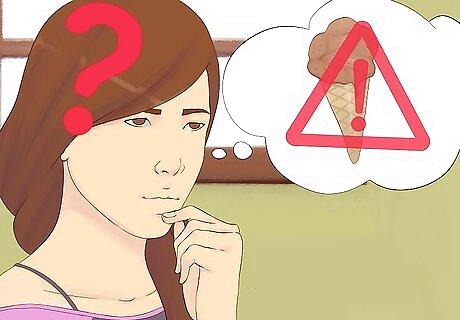
Know your ice cream triggers and train yourself to react differently. Is there something specific that happens, or a thought or memory that you have, that instantly makes you crave ice cream? Think about the things you’ve done, said, heard and smelled right before an ice cream craving and contemplate if any of these things triggered the craving. If you find you have one or more triggers for ice cream, work on an action plan to first notice that the trigger is occurring, and then prevent yourself from reacting to the trigger by eating ice cream. Triggers can include things like marketing (i.e. ice cream on sale this week, 2 tubs for $5), advertising (i.e. the gigantic billboard advertising the new Blizzard flavor of the month), and sounds (i.e. the ice cream truck jingle).
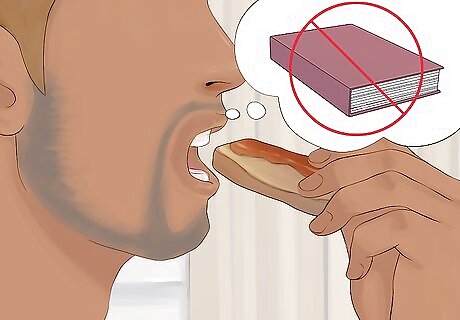
Eat consciously. Often times we eat more food when we’re not paying attention to the actual process of eating - the “unconscious eating” problem. We may not be paying attention because we’re distracted by something else, which causes us to not notice the tastes and flavors we're eating and then to miss the body's cues when we've had enough. Many of us eat while watching TV, reading a book, at a movie theater, watching sports, at a bar, or while chatting with friends, but all of these things can cause us to eat more than we would otherwise eat. Make an agreement with yourself to not eat ice cream unless the only thing you’re focused on is your food. Chances are you’re not going to find the time to concentrate ONLY on eating ice cream as you’ll have something way better to do! If you do cheat and eat some ice cream, focusing on the experience of eating it and enjoying every bite will help you to eat less with more satisfaction. Many times unconscious eating may occur because we need to keep our hands busy. Instead of using your hands to eat (without realizing it), train yourself to pick up something non-edible to play with. You can still do this unconsciously, but it won’t impact your diet!

Create other ways to feel good without ice cream. When we eat things that contain fat and sugar our bodies produce something called “opioids” which make us feel relaxed and calm. In order to achieve the same results without ice cream, we have to engage in activities that make us feel relaxed and calm. Once we’re used to these other activities, our brains won’t require the ice cream to make us feel better. Do you eat ice cream because you feel sad? Do you eat ice cream to reward yourself for accomplishing goals? Think of other, non-food ways to reward yourself. Maybe a new scarf, a new episode of your favorite TV show, or a night at the opera with friends. Do you eat ice cream because you feel you "deserve it" at the end of a hard day's work? Consider other ways to reward yourself-- if you prefer a food treat, try a bowl of low-sugar cereal, a cup of hot tea, or even a small glass of wine-- all of which can help you unwind and prepare for bed. Even better, try non-food ways of relaxing like a hot bath with candles, a massage, or several chapters of a new book.
Changing Your Habits

Get plenty of sleep. Getting enough shut eye each night is not easy, especially if you’re someone who doesn’t have a regular, daily schedule. However, making sure you’re well rested also ensures you don’t overeat and indulge in that extra bowl of ice cream. Research shows that people who get enough sleep are less likely to overeat, especially "emotional eating" which is the body's way of coping with extreme exhaustion. This is because in extreme exhaustion, your body is desperate for quick energy, which it can find in a high amount of calories, sugar, and carbohydrates. A lack of sleep may also be responsible for a lack of specific hormones that help control appetite. More sleep means we get the proper level of hormones and therefore the proper appetite stimulation, helping us regulate how much food we eat.

Eat at regular intervals. Have you ever used the excuse that you can have ice cream tonight because you skipped breakfast? While it might result in the same amount of calories on that day, it robs your body of needed nutrients and can cause you to overeat the next day to make up for it. Instead of skipping meals, have either a meal or a snack every 3-4 hours while you’re awake. This will result in approximately 5 meals per day on an average day. Spreading out your eating will help stop cravings by keeping your body's hunger cues at bay, and also stop the awful energy crash when your blood sugar drops suddenly.
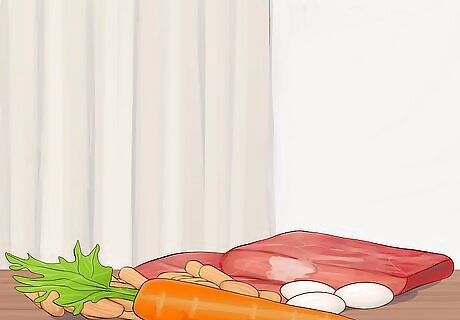
Include protein with every meal. Many people indulge in ice cream at the end of the day because they are actually hungry again, having eaten a less-than-satisfying dinner. Protein is known to make you feel fuller, longer, keeping some of those cravings at bay. Eating protein with every meal will stop the hunger from reappearing in-between meals, which should stop you from suddenly feelings like you need an ice cream cone to get you by till dinner or as a late night snack.

Drink more water. Thirst is often confused for hunger because they both have the same basic symptoms. Instead of having that ice cream snack, have a large glass of water first. Chances are you’ll feel full with the water and won’t feel like the ice cream after all. In addition, start drinking water on a regular basis every day to help control your overall appetite. This can prevent the cravings from happening in the first place.
Thinking Differently
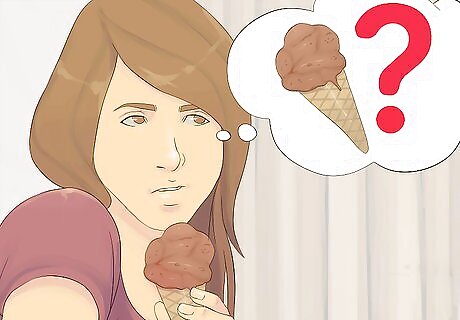
Become mindful about what you eat. Have you ever sat down to a movie with a pint of Ben and Jerry's, and before the opening credits have ended, you've finished the whole container without even realizing it? This is called “unconscious eating” and it’s very common. It happens when we simply are not aware that we’re eating. Think about the food you put in your mouth, including not allowing yourself to take another bite until you’ve swallowed the existing mouthful. Savor each bite - which will also slow down your eating. Don't eat ice cream while you're engaging in other enjoyable activities (like watching a movie or surfing the internet). Instead, savor the moment itself, and let the joy of the activity be enough. Before putting one spoonful of ice cream in your mouth, ask yourself these two questions: If I eat this ice cream, will I feel like I lost control? If I eat this ice cream, will I feel shame, blame or guilt? If you answer yes to one or both of these questions, put that ice cream aside and have something else.
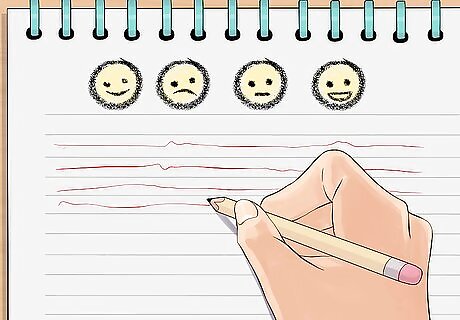
Allow yourself to feel your emotion. One of the many reasons we crave foods like ice cream is because it makes us feel better. But one of the reasons we want to feel better is because we don’t allow ourselves to truly experience our emotions. Rather than trying to ignore or push aside what we’re feeling, allow yourself to feel the emotions. Cry if you have to. Talk to someone about what you’re feeling. Write down your feelings in a journal. Allow yourself to experience emotions rather than comfort yourself with ice cream.
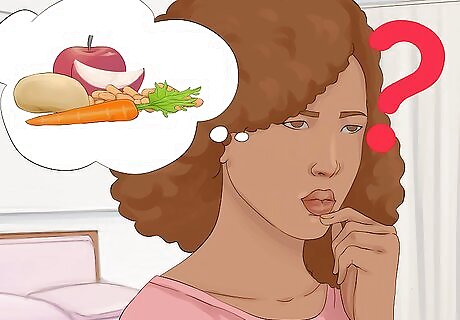
Find other ways to deal with PMS. While it is sometimes used as a mean joke or a stereotype, it is true that some women might crave ice cream during the few days leading up to their period, as a part of a cluster of symptoms known as premenstrual syndrome. Recognizing the correlation between your ice cream consumption and menstrual cycle can save you from being a slave to ice cream during those days. Eat something else. The truth is, most women burn up to 15% more calories during their period, as the body works hard to cleanse the womb and prepare for another month. It is normal to feel hungrier during this time, since you need more calories. Instead of wasting the calories on sugar and fat in ice cream, eat something more nutritious like frozen yogurt, a smoothie, or a glass of chocolate milk. Those things will satisfy your craving for something cold and sweet but provide more nutritional bang for the buck. Don't keep it in the house leading up to your period. If you know you typically crave it, don't buy it in advance, so that it will be harder to access when you find yourself wanting it. Think of other ways to soothe your body and emotions during PMS: a hot bath, a good book, or even a small glass of wine can be preferable to a pint of chocolate ice cream.

Be a leader, not a follower. Don’t feel the need to order that ice cream for dessert just because everyone else at the table is ordering ice cream for dessert! It doesn’t matter what they think about you. Do what you want to do, not what everyone else is doing.
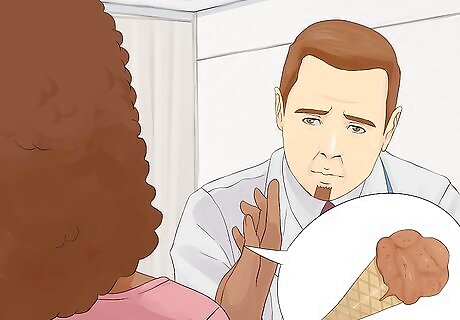
Get help. If you’ve tried other methods of eliminating ice cream from your diet, but none of them have worked, consider the possibility that you might need to get some expert help. You might want to reach out to a doctor, therapist, and/or a registered dietitian for help. A counselor or doctor can help you identify the root causes of your addiction, and set you up with a personalized plan to eliminate the problem. If you do have a food addiction, remember that food manufacturers purposely make food, like ice cream, with a combination of ingredients that creates feelings of pleasure and satisfaction Obviously they want to sell and re-sell their product as often as possible, so they create a product that people will crave.










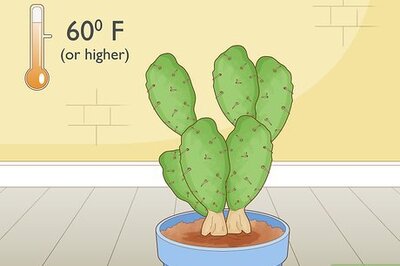



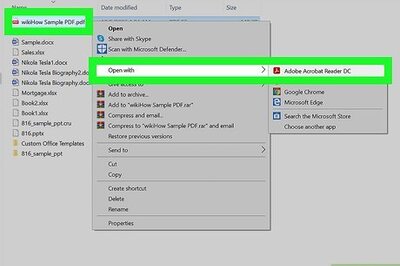





Comments
0 comment